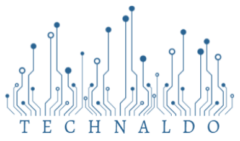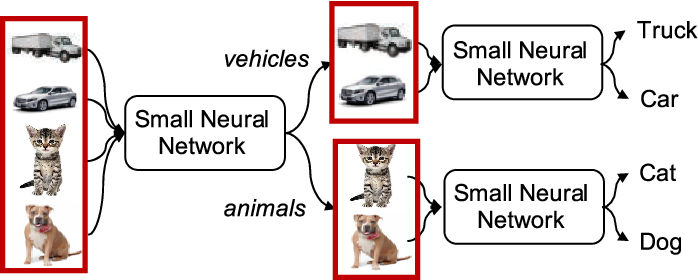Modular neural networks for low-power image classification on embedded devices usually are compact electromotive computers with limited hardware resources. With these devices, it is very complicated to run deep neural networks (DNNS). DNNS executes millions of operations and consumes an essential amount of energy. According to prior research, a considerable number of a DDN’s memory accesses and calculations are unnecessary while executing a task like an image classification. To lessen this repetition they have introduced the Modular neural network Tree Architecture.
WHAT IS THE PURPOSE OF MODULAR NEURAL NETWORK TREE ARCHITECTURE?
This Architecture uses numerous smaller DDNs to increasingly classify images of categories based on a novel visual similarity metric. It continues to differentiate dissimilar groups avoided once their categories are selected by a module, thus reducing redundant operations, energy, and memory accesses. The proposed Modular Neural Network Tree Architecture is evaluated against monolithic DNN architectures such as VGG, ResNet, and DenseNet on different embedded devices.
Let’s discuss its further contribution.
- The methods work consistently for different image datasets.
- The metric used in it can build super-groups of different sizes in the MNN tree.
- It reduces redundant computation and memory access.
- They provide a detailed explanation of why existing solutions do not perform well.
Modular neural networks for low-power image classification are a rapidly growing field in artificial neural network research. To investigate the relations between structure and relation in both artificial and natural neural networks, it presents a series of simulations and analyses with modular neural networks.
HOW TO DEFINE THE EMBEDDED DEVICES?
An embedded device is a specialized device that is designed for a few specific purposes and is usually embedded within another object. This device is part of a system that serves a significant purpose, for example, a heart rate monitor embedded in a wristwatch that helps you to get connected to your smartphone to show your heart status, distance traveled and calories burned. These devices have made our lives easier.
FURTHER EXAMPLES OF EMBEDDED DEVICES
- Central heating systems.
- GPS systems.
- Fitness trackers.
- Medical devices.
- Automotive systems.
- Transit and fare collection.
- ATMs.
- Factory Robots.
- Electric vehicle charging stations.
- Interactive kiosks.
- POS machines.
FACTORS LEADING TO MODULAR NEURAL NETWORK FOR LOW-POWER IMAGE CLASSIFICATION
- REDUCING MODEL COMPLEXITY
Controlling the degrees of freedom of the system is one of the methods to minimize training time.
- COMBINATION OF TECHNIQUES
In this, as a building block, more than one method can be used.
- DATA FUSION AND PREDICTION AVERAGING
It can be a thought of composite systems in network committees.
- LEARNING SEVERAL TASKS AT THE SAME TIME
For various tasks the trained modules can be transferred between systems.
- ROBUSTNESS AND INCREMENTALITY
The integrated network may be fault-tolerant and develop progressively.
These are the basic factors that lead to modular neural networks for low-power image classification on embedded devices.
LOW-POWER IMAGE PROCESSING APPLICATIONS IN EMBEDDED DEVICES WITH MODULE NEURAL NETWORKS
Embedded devices for modern image processing applications require essential processing power and memory alongside the high-resolution video. Add to this network, you have all the elements required for a powerful machine learning-based image processing system. A better way to design a board around a powerful GPU module. These modules run on an ARM cortex architecture and the embedded software developer will find various resources for building these modules.
Here are some applications you can build in an embedded environment.
- IMAGE IDENTIFICATION
This includes identifying specific features within an image. Some common tasks include edge deduction (e.g; laplacian or canny filtering).
- IMAGE CLASSIFICATION
Images are categorized based on the contained features in this application.
- IMAGE SEGMENTATION
This task is meant to segment an image into specific characteristics. The example you can see is in pose identification. Where the specific body parts must be identified.
These are the applications of embedded devices used in low-power image classification.
ALSO READ: What is a Graphical User Interface, and How Important is it?
CONCLUSION
Modular neural networks for low-price image classification for embedded devices are the smallest battery-powered computers that are with specific hardware resources. These devices are used in ATMs, fitness trackers, central heating systems, GPS systems, factory robots, and heart wristwatches display your heart condition and CAN calculate your calories. Their device needs applications like image segmentation, image classification, and image identification to make it work more efficiently.
ALSO READ: WHAT IS THE PRIORITY IN HEALTHCARE MOBILE APPS?

